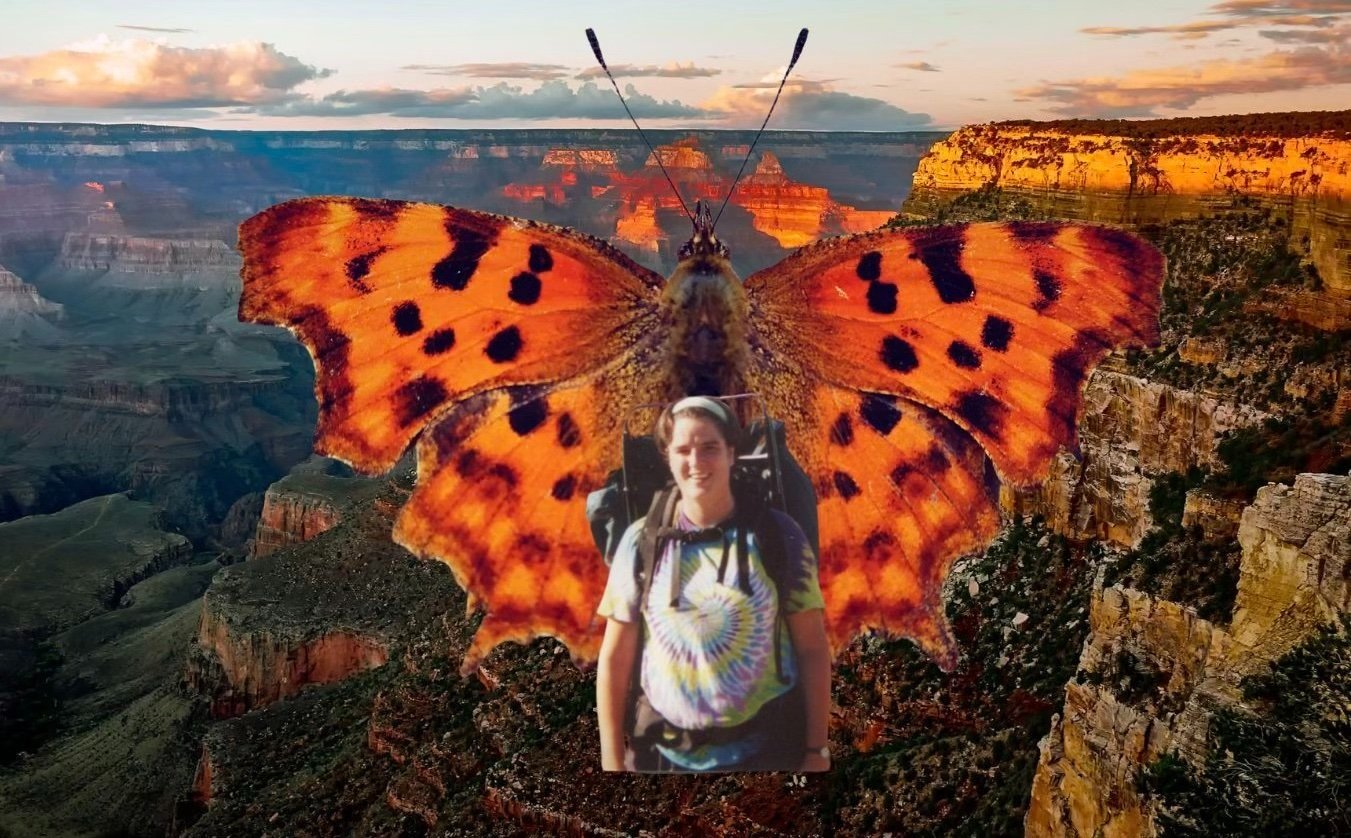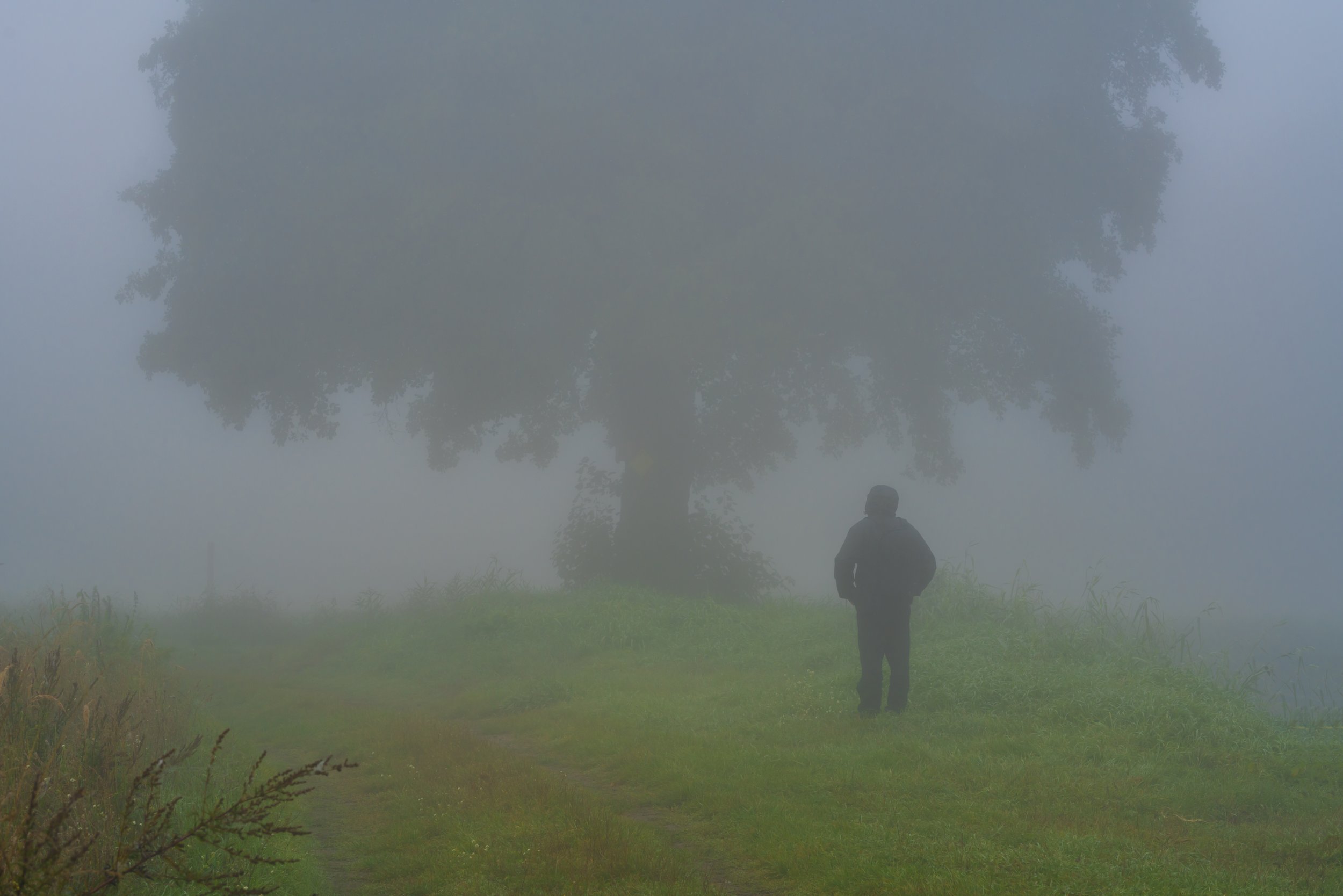When I was a little kid, and we would visit my grandmother in Maryland, we would sleep on mattresses on the floor in the workshop of her husband, Aubrey. He had this passion project of building an airplane out of wood and he had turned one of the bedrooms in the townhouse into a woodshop. On one side of the room was a workbench, neat and tidy with the tools on a pegboard. And the entire other wall was pegboard where dozens of pieces were hanging that would eventually become wings. There were tiny pieces that were glued together. And then pieces made up of those pieces and so on. If you looked at the whole wall you could kind of discern the progression—how he started with the smallest pieces and built each section—that eventually made up an even larger section. Delicate curved pieces that would eventually create something strong enough to fly.
Piece by piece and section by section is also how you heal from trauma. You say one small brave thing and then another. You try one small thing that frightened you and then another. The words feel so small. The actions seem small. Because the feelings and memories feel big. Too big to hold or describe. Too big to make sense to anyone else. So you take a deep breath and you do the small thing that you can do. And you do it again and again.
And that’s how you build wings. Whether they are for a hand-crafted airplane—or the wings you are finally using for yourself. Wings that allow you to get some distance from your trauma—have some perspective as you look at it. Wings that help you begin to move across the span of time. Wings that help you begin to inhabit your life—a life that is more than your trauma.
The wings of the airplane took a very long time. I think I was in high school by the time they were mostly complete. And I think the wings I have built as I have been healing have taken a really long time too. But I can feel them, and I am grateful. Which is why it can feel so discouraging or disorienting to feel like you are starting over with small pieces again. Which is exactly what was required when Aubrey began building the body of the plane. Once again small pieces glued to other small pieces appeared on the pegboard.
As a therapist or a coach I so often hear, “But I already worked on that,” or “I already talked about that.” There is such frustration with the idea that there is more healing to be had in relation to something that was hard. That an old wound is sore—and maybe ready to heal in a different way. And as a client I have said or felt the same thing. It can feel like you are starting over. Or that you’re in some trauma healing version of a kid’s game where you have to go all the way back to start. It feels like you did something wrong—or that you didn’t do it right the first time. But this new phase of healing is actually a milestone. It’s not a failure. It’s an achievement. It’s hard to see that the wings you built with your hard work and persistence are exactly the reason you can do the work that you need to do today.
You had to build the wings first. And now you get to build the body. To take on the central part of your story. Your trauma. To more fully build the place that will hold you. To more fully understand what is at the core. To more fully inhabit all of yourself. Your trauma. Your healing. Your growth. And building the core will look and feel a lot like building the wings. Small brave conversation after small brave conversation. Small piece connected to another small piece. Patiently waiting while the glue dries. Patiently putting the pieces together. You have to find a way to remind yourself that working with small pieces, often painful pieces, is a triumph. Now you get to build the body. But first you build wings.
© 2023 Gretchen L. Schmelzer, PhD




